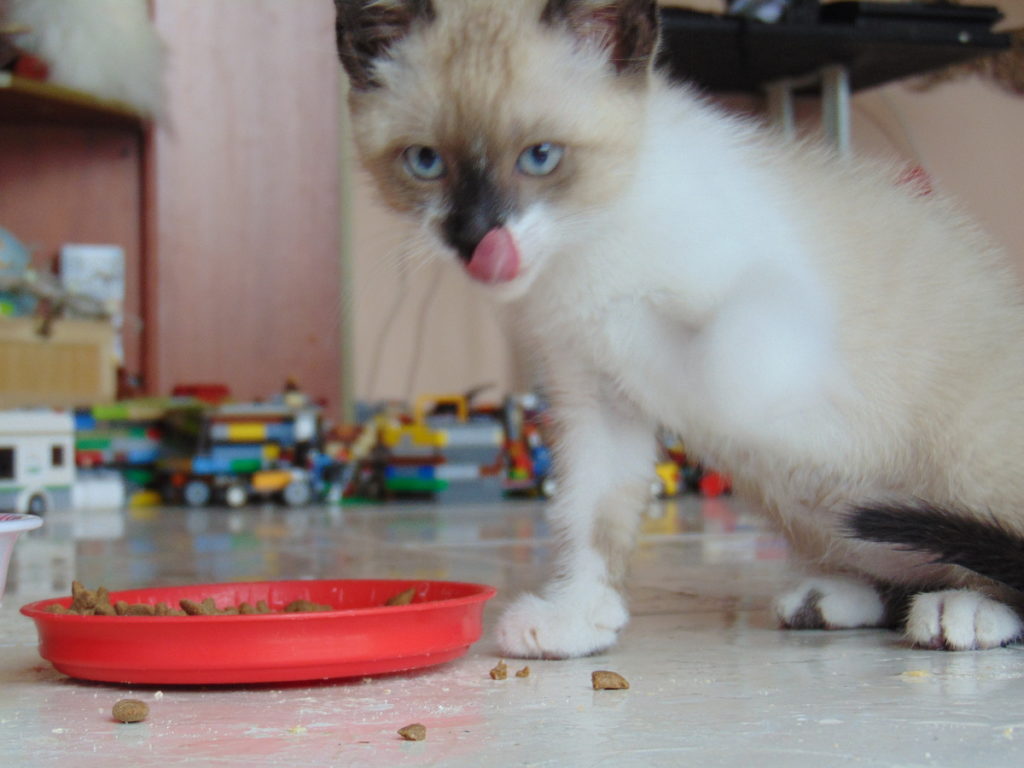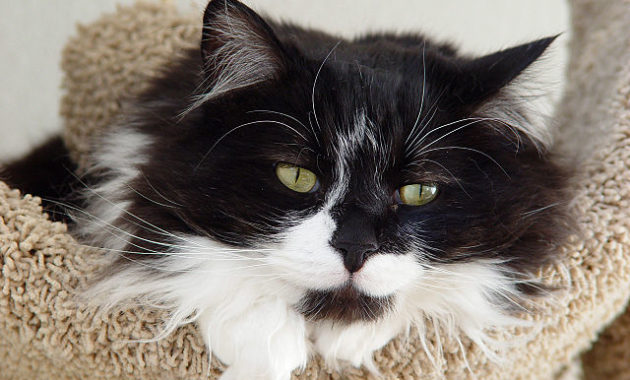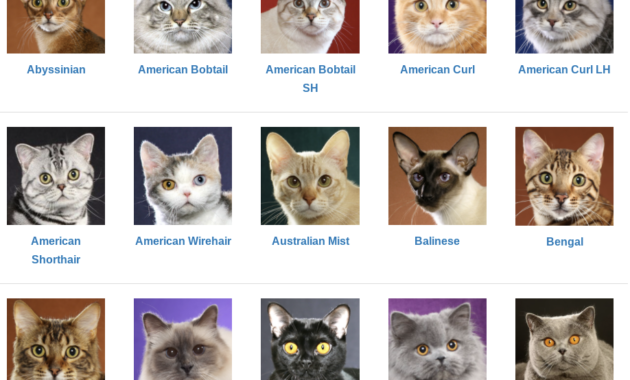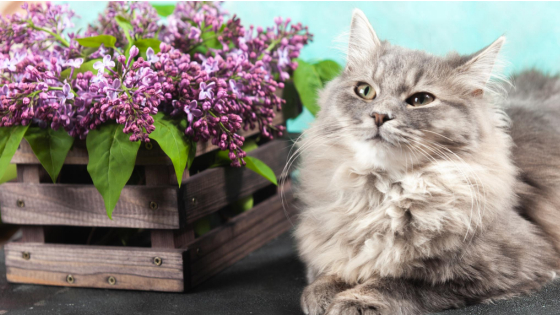The question of whether cats are ticklish prompts a fascinating exploration into the intricate world of feline sensory experiences. Cats, with their enigmatic behaviors and subtle communication cues, present a captivating subject for investigation. Understanding the nuances of ticklish responses in these creatures can offer valuable insights into their preferences, interactions, and well-being.
As we delve into the realm of cats' tactile sensations, a deeper comprehension of their emotional and physical responses unfolds, shedding light on the complex dynamics between humans and their feline companions.
Key Takeaways
- Cats react to knismesis and gargalesis differently, showing enjoyment through purring and gestures.
- Understanding cats' touch preferences is crucial for positive interactions during tickling.
- Signs of enjoyment include kneading, tail movements, and relaxed body language.
- Severe reactions or unusual behaviors during tickling may require a veterinary checkup for underlying health issues.
Ticklish Sensations in Cats
When exploring ticklish sensations in cats, it is essential to understand that they react to two main types of stimuli: knismesis and gargalesis. Knismesis typically triggers goosebumps or skin twitching when lightly touched, while gargalesis induces an involuntary response to more intense poking or tickling.
These sensations stimulate a combination of pain and pleasure nerve receptors in cats, influencing their reactions to various types of touch. Understanding these distinctions is crucial in interpreting how cats respond to different forms of physical interaction.
Cats' Touch Preferences
Understanding cats' touch preferences is crucial in fostering positive interactions and strengthening the bond between feline companions and their owners. Cats have individual preferences when it comes to being touched, and recognizing and respecting these preferences is key to building a harmonious relationship with your cat. Some cats may enjoy gentle head rubs, while others prefer chin scratches or back massages. Observing your cat's reactions to different touches can help you understand what they like and what makes them uncomfortable. By paying attention to their body language and responses, you can ensure that your cat feels loved and cared for.
| Preferred Touches | Cats' Reactions |
|---|---|
| Head rubs | Purring, nuzzling |
| Chin scratches | Relaxation, kneading |
| Back massages | Tail movements, gestures |
| Belly rubs | Varied reactions, watch for signs of discomfort |
Health Issues and Reactions
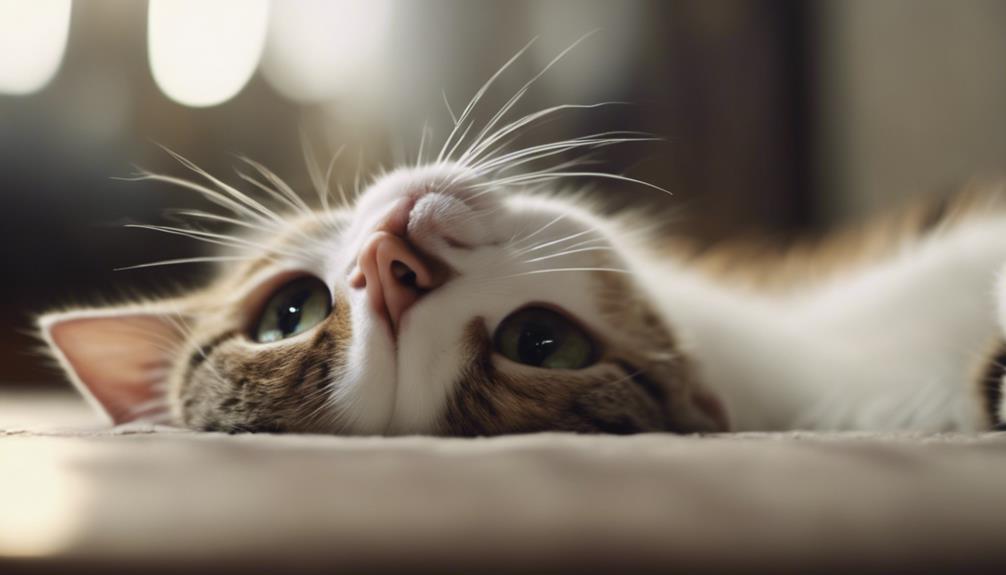
Health issues and reactions in cats can manifest through various physical cues and behaviors that may indicate underlying problems requiring prompt attention.
- Reactions near the base of the tail may occur.
- Rippling skin can indicate fleas, allergies, or feline hyperesthesia syndrome.
- Feline hyperesthesia syndrome is similar to a seizure disorder.
- Cats may harm themselves trying to alleviate sensations.
These signs should not be ignored, as severe reactions may necessitate a veterinary checkup to properly diagnose and address any underlying health issues. Understanding these potential indicators can help cat owners provide the necessary care and attention to ensure their feline companions' well-being.
Signs of Enjoyment in Cats
Indications of a cat's enjoyment during tickling can be observed through various physical and behavioral cues, providing valuable insights into their preferences and well-being. Cats often show relaxation by purring and nudging during tickling sessions. Kneading with their front paws is a common sign of enjoyment, as it mimics the behavior of nursing kittens.
Tail movements and gestures, such as slow blinking or kneading, also indicate pleasure. Most cats clearly communicate their touch preferences, whether they enjoy being tickled on the head, cheeks, or back. Understanding and respecting these signals is crucial for building a strong bond with your feline companion and ensuring their comfort and happiness during tickling interactions.
Individual Cat Reactions
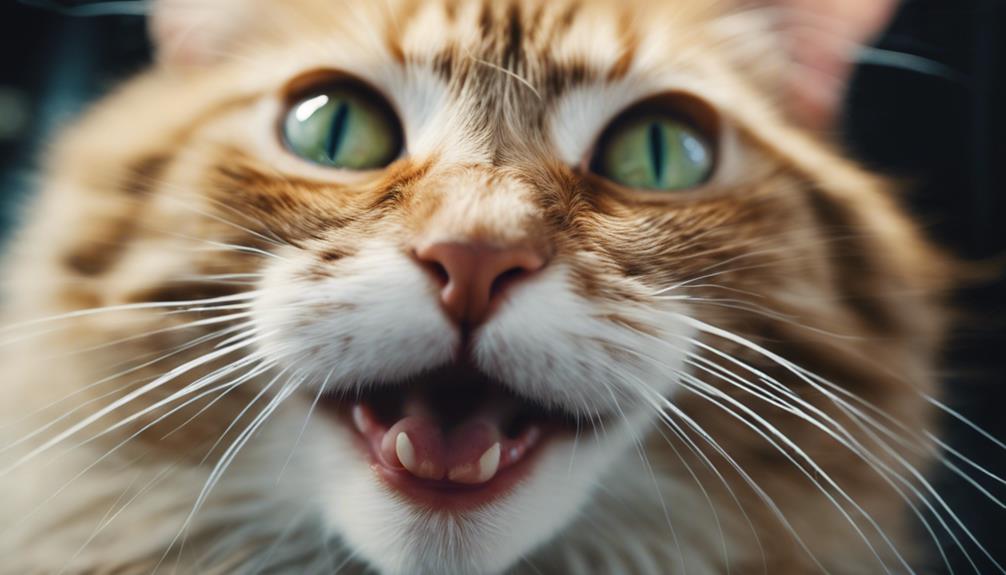
Each cat exhibits unique reactions to tickling based on their individual sensory preferences and comfort levels.
- Tail Sensitivity: Cats may react differently to tickling near the tail base.
- Vocal Responses: Some cats might purr or meow in response to tickling.
- Body Language: Watch for tail movements or ear positions to gauge their comfort level.
- Facial Expressions: Squinting eyes or relaxed facial muscles can indicate enjoyment.
Communicating Happiness Through Touch
Using gentle touches and subtle gestures, cats adeptly communicate their happiness and contentment through touch. Cats often express their joy through physical interactions, such as gentle headbutts, rubbing against their owners, and kneading with their paws. These actions are not only a sign of affection but also a way for cats to mark their territory with their scent glands.
Purring is another common way for cats to convey happiness while being petted or held. Additionally, some cats may show their delight by stretching out their bodies, exposing their belly, or making slow blinking eye contact. Understanding these subtle cues and responding appropriately can strengthen the bond between cats and their human companions.
Understanding Cat Body Language
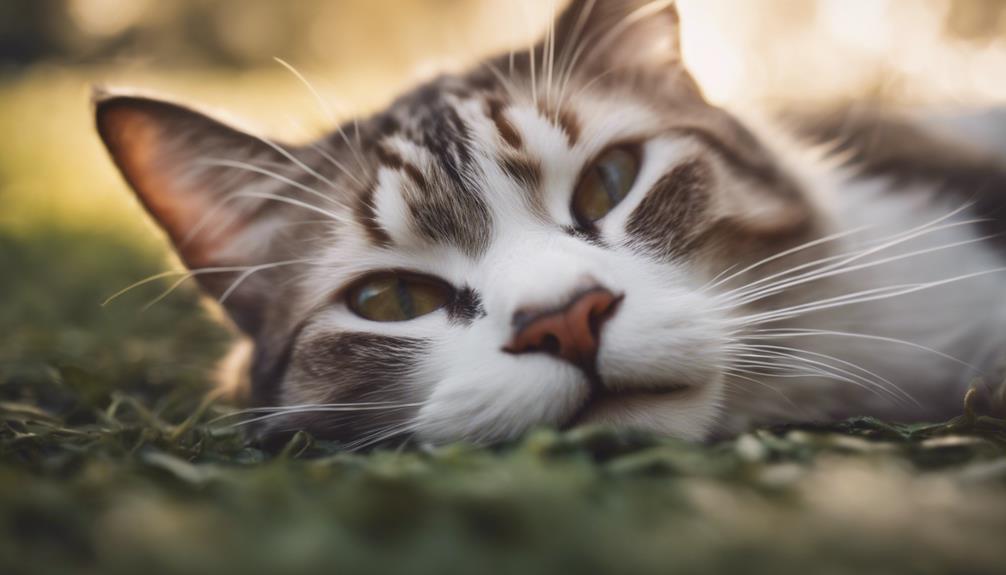
A thorough comprehension of feline behavior can be enhanced through a keen observation of cat body language cues. Understanding these non-verbal signals is crucial for cat owners to interpret their pets' feelings and needs accurately. Here are four essential cat body language cues to look out for:
- Tail Position: The position of a cat's tail can indicate its mood, with an upright tail showing confidence and a puffed-up tail signaling fear or aggression.
- Ear Movements: Cats' ears can rotate to different angles, pointing backward when agitated or flattened against the head when scared.
- Eye Contact: Direct eye contact can be a sign of aggression, while slow blinking indicates trust and affection.
- Body Posture: A relaxed and open body posture signifies comfort, while a tense body suggests unease or stress.
Managing Ticklish Reactions in Cats
Understanding how to effectively manage ticklish reactions in cats involves interpreting their unique responses to touch and implementing appropriate handling techniques to ensure their comfort and well-being.
When tickling a cat, it's crucial to observe their body language for signs of enjoyment or discomfort. Cats may display pleasure through relaxed body postures, purring, and gentle nudging. However, if a cat shows signs of distress such as tensing muscles, flattening ears, or twitching tail rapidly, it's essential to stop the tickling immediately.
Additionally, respecting a cat's boundaries and preferences is key to building a trusting and positive relationship. Always approach ticklish interactions with sensitivity and attentiveness to create a safe and enjoyable experience for your feline companion.
Related Cat Behavior Articles
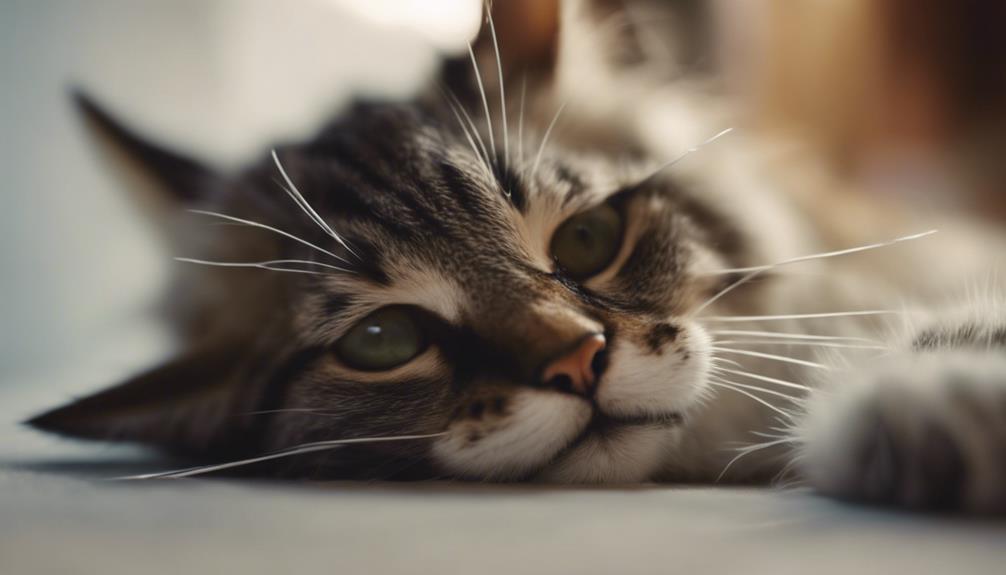
Exploring the topic of cat behavior beyond ticklish reactions, one can delve into various informative articles covering a range of feline health and behavioral issues. Here are some related articles that can provide valuable insights into understanding and addressing various aspects of cat behavior:
- Understanding cat weight and health
- Exploring reasons for weight loss in cats
- Addressing sudden biting behavior in cats
- Accessing more articles on cat behavior
These articles can offer guidance on maintaining your cat's health, interpreting their behavior, and addressing any concerns that may arise. By staying informed and proactive, cat owners can ensure the well-being and happiness of their feline companions.
Conclusion
In conclusion, the exploration of ticklish sensations in cats reveals a complex interplay of behaviors and responses. Understanding cats' tactile experiences and communication cues is crucial for fostering harmonious relationships with these enigmatic creatures.
By delving into the nuances of ticklish responses and preferences, cat owners can navigate the delicate balance between pleasure and potential triggers for adverse reactions. This multifaceted world of feline ticklishness offers a glimpse into the intricate interactions between humans and their beloved feline companions.

